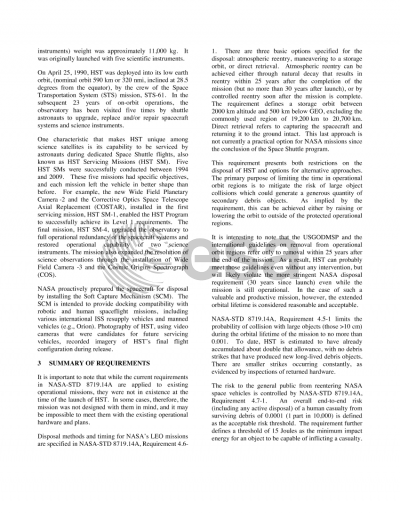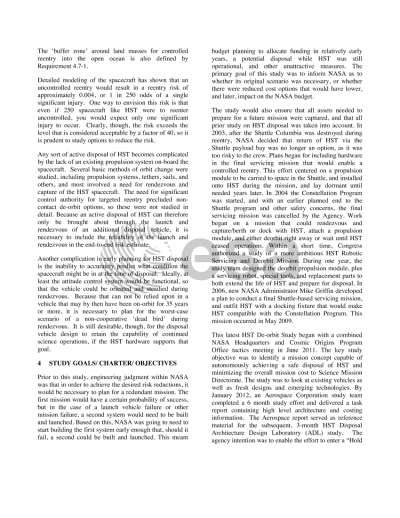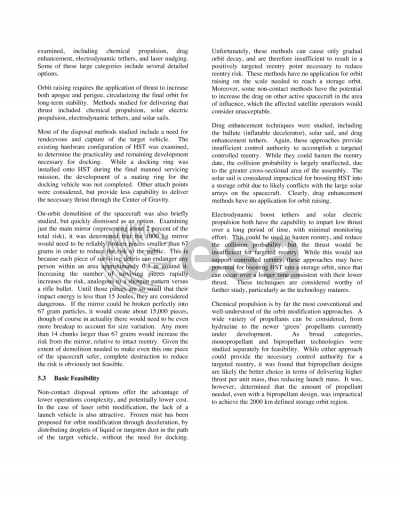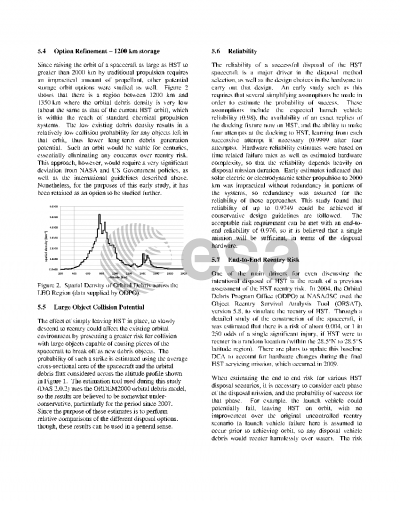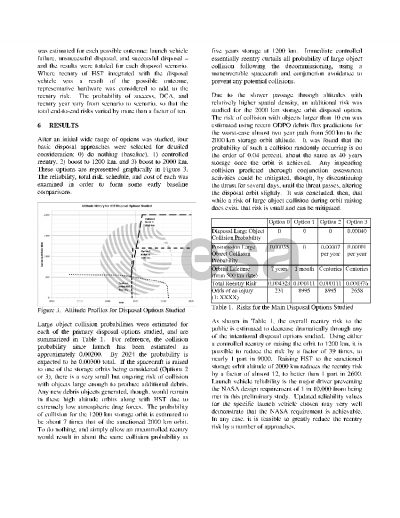Document details

Abstract
Since its launch in 1990, the Hubble Space Telescope has been one of the most productive scientific endeavors in history. Nonetheless, all good things must eventually come to an end, including the useful life of this spacecraft. Since Hubble has no on-board propulsion system, its orbit is currently decaying, and recent models predict that without any intervention the telescope will reenter the atmosphere, no earlier than 2031. Due to the very large size of the spacecraft and the extensive use of materials that are expected to survive reentry heating, an uncontrolled reentry would pose an unacceptable risk of injury to the general public. The original designs called for the telescope to be retrieved by the Space Shuttle at the end of its mission, but that is no longer an option. An early study has been conducted to examine options for disposing of Hubble in a way that would drastically reduce the risk, or eliminate it entirely. In order to lay the foundation for an eventual decision several years from now, four basic options for disposal were studied, each based on three possible telescope hardware status conditions. The study included an examination of the feasibility, reliability, end-to-end risk, cost, and schedule for each potential approach. A summary of the findings of the feasibility, reliability, and risk assessments from that study will be presented.
Preview

